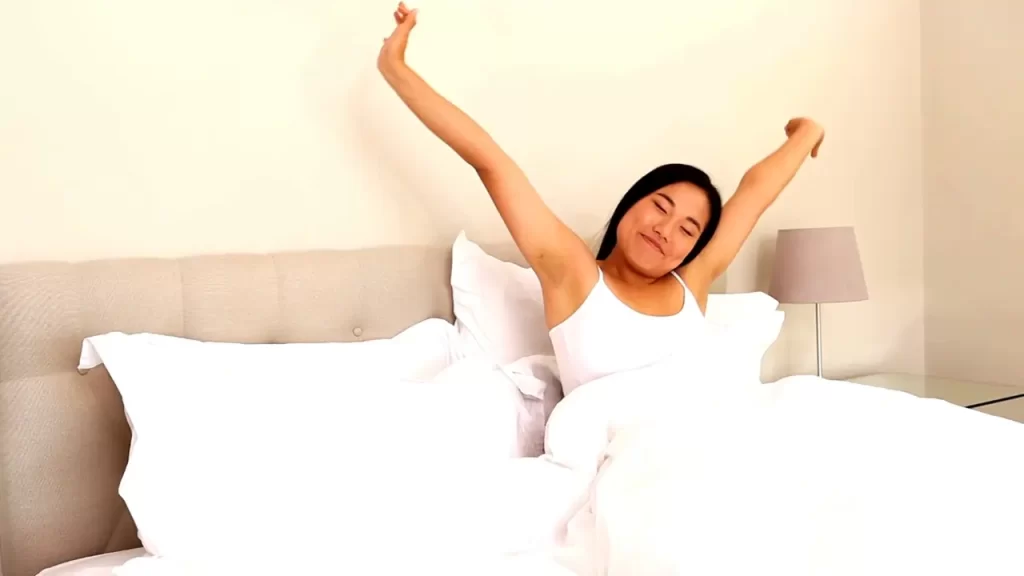
Practicing yoga for better sleep can significantly improve your restfulness and overall well-being. Here’s a concise guide to some effective yoga poses that promote relaxation and enhance sleep quality:
Standing Forward Bend (Uttanasana):
Stand with your feet hip-width apart and gently fold forward, allowing your upper body to hang. This pose helps release tension and calms the mind.
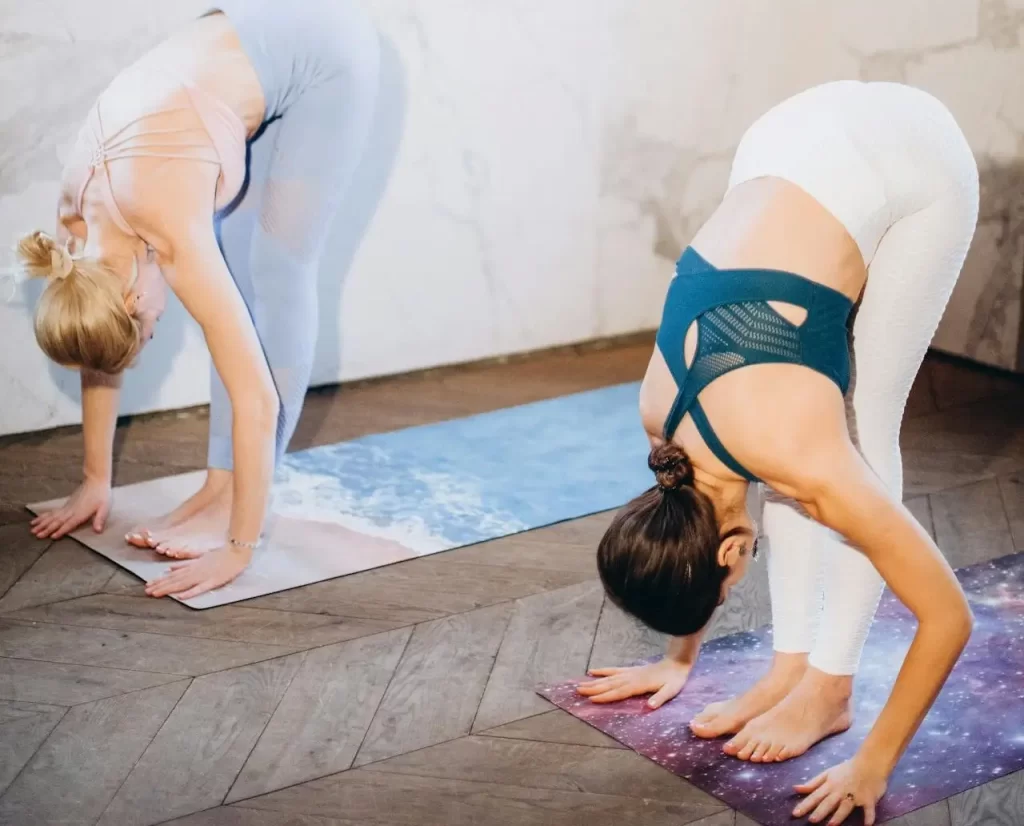
Certainly! 🧘♀️ Uttanasana, also known as Standing Forward Bend, is a fundamental yoga pose with numerous benefits for both the body and mind. Let’s dive into the details:
Physical Benefits:
- Hamstring Stretch: Uttanasana provides a deep stretch to the hamstrings, calves, and lower back. Regular practice can improve flexibility in these areas.
- Spinal Extension: As you fold forward, your spine lengthens, promoting better posture and spinal health.
- Internal Massage: The pose compresses and massages internal organs, stimulating digestion, metabolism, and various systems like the nervous and endocrine systems.
- Blood Circulation: The forward fold enhances blood circulation to the brain.
Mental and Emotional Benefits:
- Stress Relief: Uttanasana helps calm the mind, reducing stress, anxiety, and fatigue.
- Increased Self-Awareness: Practicing this pose can enhance your awareness of your body and emotions.
- Soothes Nerves: It has a soothing effect on the nervous system.
- Relief from Fatigue: Perfect for winding down after a long day.
How to Practice Uttanasana:
- Start in Mountain Pose (standing with feet hip-width apart).
- Exhale and hinge at the hips, allowing your upper body to fold forward.
- Bend your knees slightly if needed to bring your palms flat to the floor. Press your head against your knees.
- Feel the stretch in your spine as you pull your head down and press your hips up.
- Work on straightening your legs to deepen the hamstring stretch.
- Breathe and hold for 4-8 breaths, actively pressing your belly into your thighs during inhalation.
- To release, bend your knees, keep your back straight, and return to Mountain Pose.
Modifications and Variations:
- Use blocks under your hands for a gentler stretch.
- Explore different hand placements, such as holding the ankles, crossing arms behind the legs, or clasping the elbows.
Remember to listen to your body and practice mindfully. Enjoy the benefits of Uttanasana! 🌟
Legs Up the Wall (Viparita Karani):
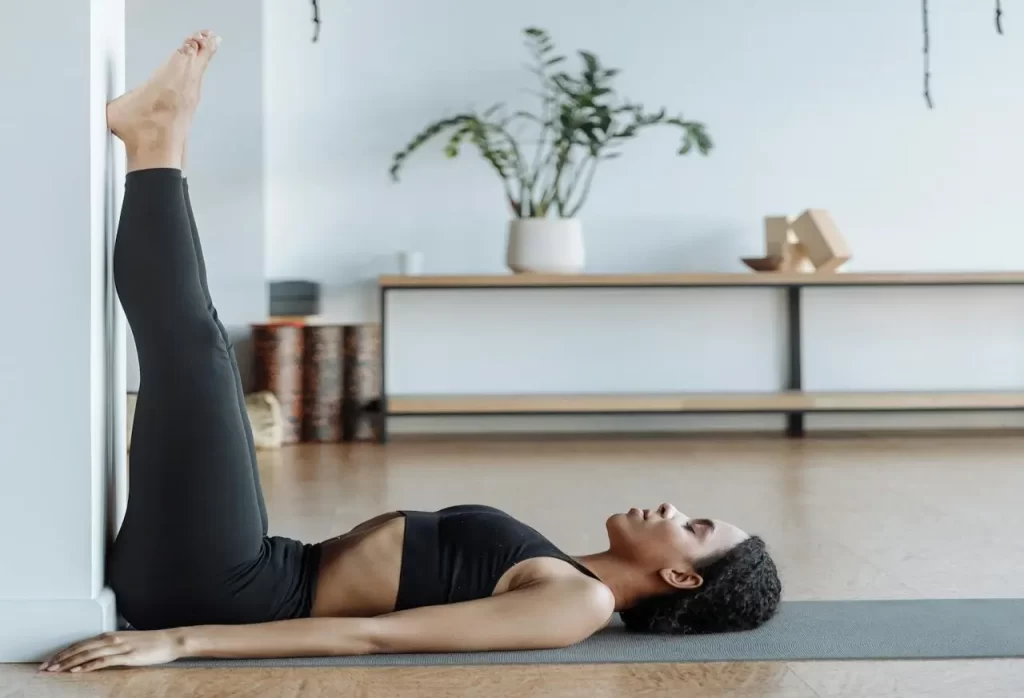
Lie on your back with your legs extended up against a wall. This restorative pose encourages blood flow to the brain and reduces anxiety.
Certainly! 🧘♀️ Viparita Karani, commonly known as Legs-Up-the-Wall Pose, is a rejuvenating yoga posture with several health benefits. Let’s explore it further:
Physical Benefits:
- Improved Circulation: By inverting your legs, Viparita Karani encourages blood flow from your legs back toward your heart. This can reduce swelling, prevent blood pooling, and enhance overall circulation.
- Gentle Hamstring Stretch: The pose gently stretches the hamstrings, relieving tension and promoting flexibility.
- Relaxation for Aching Muscles: It provides relief to tired muscles and joints, especially in the legs and feet.
Mental and Emotional Benefits:
- Stress Reduction: Viparita Karani activates the parasympathetic nervous system, promoting relaxation and reducing stress and anxiety.
- Headache Relief: The pose soothes headaches and promotes a sense of calm.
- Supports Lymphatic System: It aids lymphatic drainage, supporting immune function.
How to Practice Viparita Karani:
- Find an open wall space.
- Lie on your back with your hips close to the wall.
- Extend your legs up the wall, keeping them straight.
- Relax your arms by your sides or place them on your belly.
- Close your eyes and breathe deeply.
- Stay in this position for 5-15 minutes, focusing on relaxation.
Remember, Viparita Karani is accessible to most people and offers a gentle way to experience inversion benefits without straining your neck or head. Enjoy the calming effects! 🌟
Child’s Pose (Balasana):
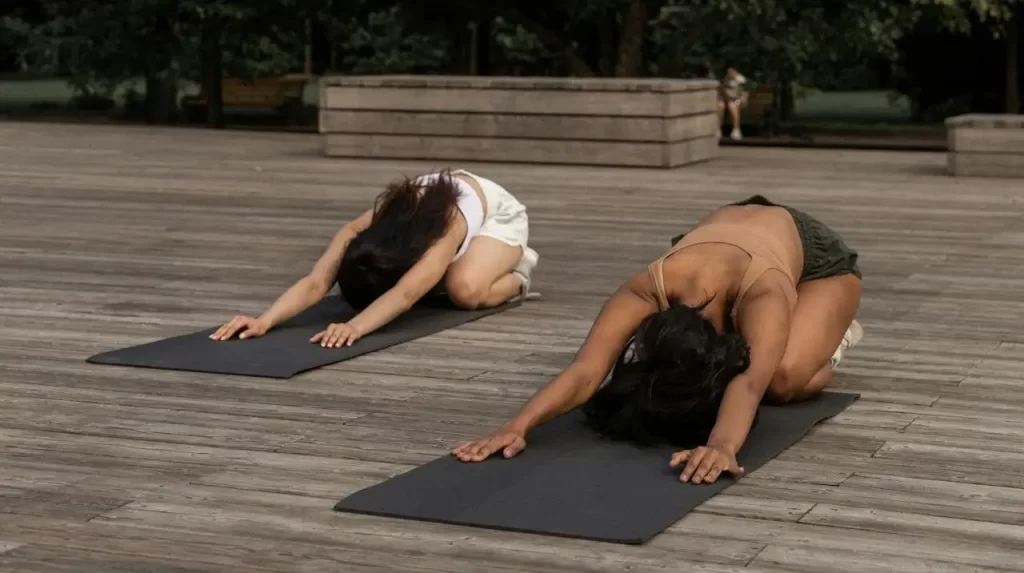
Kneel down, sit back on your heels, and stretch your arms forward. Child’s Pose relaxes the spine and soothes the nervous system.
Certainly! 🧘♀️ Balasana, commonly known as Child’s Pose, is a restorative yoga posture that offers both physical and mental benefits. Let’s explore it in depth:
Physical Benefits:
- Spinal Stretch: Balasana gently stretches the lower back, hips, and thighs. It provides relief from tension and stiffness in these areas.
- Abdominal Massage: The pose massages and tones the abdominal organs, aiding digestion and elimination.
- Relief from Pain: It helps alleviate back and neck pain, making it ideal for those with discomfort.
- Flexibility: Regular practice improves flexibility in the spine and hips.
Mental and Emotional Benefits:
- Stress Reduction: Balasana is grounding and calming. It allows you to let go of worries and find relaxation.
- Inner Child Connection: Like a child resting in its mother’s arms, this pose fosters a sense of calm, comfort, and safety.
- Fatigue Relief: Practicing Child’s Pose rejuvenates and provides relief from stress and fatigue.
How to Practice Balasana:
Start in Table Pose (hands and knees on the floor).
Exhale and lower your hips toward your heels, allowing your forehead to rest on the floor.
Keep your knees together or slightly apart for comfort.
Choose your arm position:
- Arms overhead with palms on the floor.
- Palms or fists stacked under the forehead.
- Arms alongside the body with palms up.
Breathe deeply, pressing your belly against your thighs during inhalation.
Hold for 4-12 breaths.
To release, place palms under shoulders and inhale up to a seated position.
Modifications and Variations:
- Place a blanket under hips, knees, or head for added comfort.
- If pregnant, spread knees wide apart to avoid pressure on the abdomen.
Remember, Balasana is a nurturing pose that brings calmness and relaxation. Enjoy its soothing effects! 🌟
Corpse Pose (Savasana):
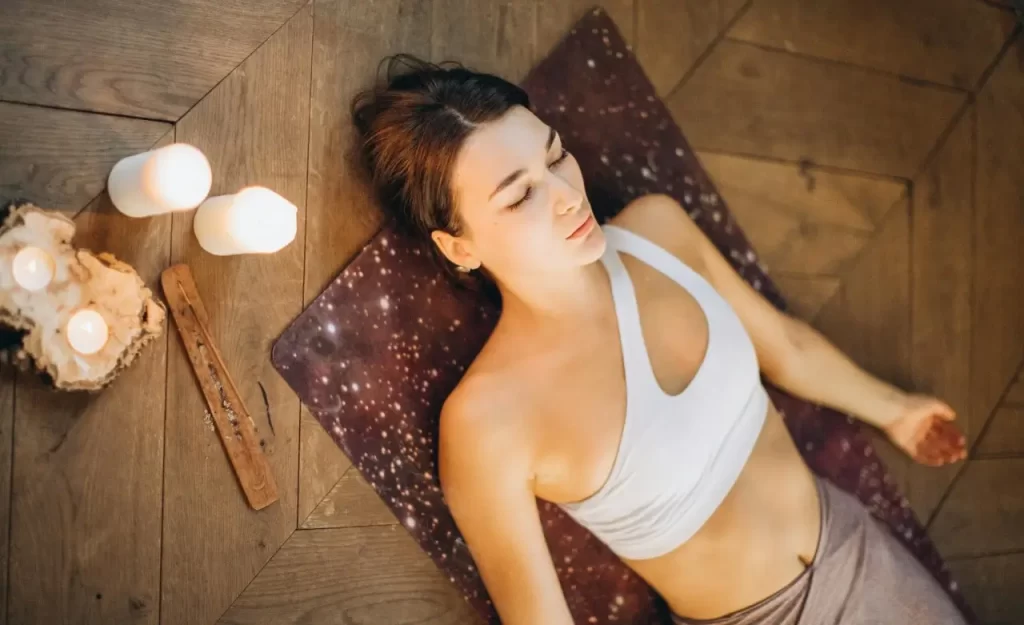
Lie flat on your back, arms by your sides, and legs relaxed. Savasana is the ultimate relaxation pose, preparing you for deep sleep.
🧘♀️ Savasana, also known as Corpse Pose, is a deeply restorative yoga posture that offers a multitude of benefits for both the mind and body. Let’s explore it in detail:
Meaning and Symbolism:
- The name “Savasana” comes from the Sanskrit words “Sava” (meaning “corpse”) and “Asana” (meaning “pose”).
- Symbolically, Savasana represents the transition from life to death, emphasizing the importance of letting go and surrendering.
Physical Benefits:
- Deep Relaxation: By lying flat on your back, you allow your body and mind to release accumulated tension and stress. It induces a state of calmness.
- Muscle Relaxation: Savasana promotes full relaxation of muscles, easing soreness and tightness.
- Improved Circulation: The reclined position supports healthy blood flow throughout the body.
- Reduced Blood Pressure: Regular practice can help lower blood pressure.
- Enhanced Sleep Quality: It prepares your body and mind for restful sleep, aiding in falling asleep faster and experiencing more rejuvenating rest.
Mental and Emotional Benefits:
- Stress Reduction: Consciously surrendering to the present moment reduces stress levels.
- Improved Focus: Quieting the mind during Savasana enhances mental clarity and concentration.
- Less Anxiety: The relaxation response uplifts mood and cultivates inner peace.
- Balanced Nervous System: It helps balance the nervous system.
Remember, Savasana is not just a physical pose; it’s a gateway to deep relaxation and inner stillness. Enjoy its calming effects! 🌟
Reclining Bound Angle Pose (Supta Baddha Konasana):
Lie on your back, bend your knees, and let the soles of your feet touch. This pose opens the hips and promotes relaxation.

🧘♀️ Supta Baddha Konasana, also known as Reclining Bound Angle Pose, is a restorative yoga posture that offers a blend of physical and mental benefits. Let’s explore it further:
Physical Benefits:
- Hip Opener: Supta Baddha Konasana stretches the inner thighs, groins, and hips. It enhances passive hip flexibility.
- Adductor Stretch: The pose lengthens the adductor muscles, promoting flexibility in the pelvic area.
- Pelvic Floor Support: It’s great for your pelvic floor muscles.
- Relaxation: As you lie on your back with knees open and feet together, your chest, abdomen, and leg muscles release tension.
Mental and Emotional Benefits:
- Stress Reduction: Supta Baddha Konasana helps relieve stress, anxiety, and feelings of depression.
- Grounding: It allows you to connect with the present moment and find calmness.
- Digestive Aid: The pose stimulates abdominal organs, aiding digestion.
- Better Circulation: It improves blood flow.
How to Practice Supta Baddha Konasana:
- Start by sitting on the floor.
- Bring the soles of your feet together, allowing your knees to fall open.
- Lie on your back, supporting your head and neck with a blanket or bolster if needed.
- Rotate your inner thighs externally, pressing your outer thighs away from your torso.
- Imagine your inner groins sinking into your pelvis.
- Relax your arms at about a 45-degree angle from your torso, palms up.
- Avoid pushing the knees forcefully toward the floor; instead, focus on releasing tension.
Remember, Supta Baddha Konasana is a soothing pose that promotes relaxation and overall well-being. Enjoy its calming effects! 🌟
Seated Forward Bend (Paschimottanasana):
Sit with your legs extended and gently fold forward. Paschimottanasana calms the mind and stretches the spine.
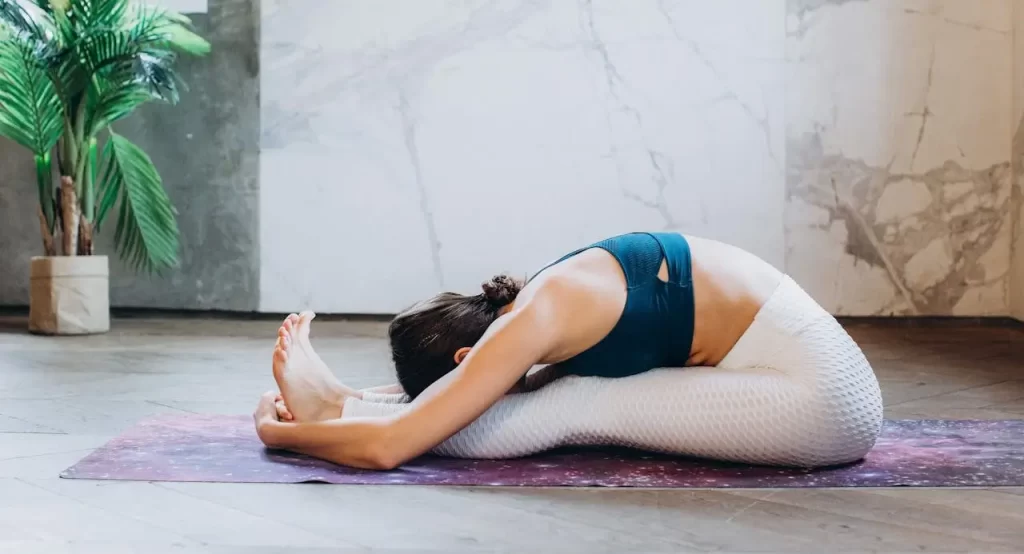
🧘♀️ Paschimottanasana, also known as Seated Forward Bend, is a foundational yoga pose with numerous benefits. Let’s explore it in detail:
Physical Benefits:
- Spinal Stretch: Paschimottanasana deeply stretches the spine, hamstrings, and calves.
- Abdominal Toning: It engages and tones the abdominal organs, promoting digestive health.
- Liver and Kidney Function: Regular practice improves liver, kidney, and colon function.
- Lymphatic Stimulation: The pose stimulates the lymphatic system, aiding detoxification.
Mental and Emotional Benefits:
- Stress Relief: Seated Forward Bend calms the mind, reducing stress and anxiety.
- Nervous System Soothing: It has a grounding effect, soothing the nervous system.
- Improved Mood: Practicing forward bends can uplift your mood.
How to Practice Paschimottanasana:
- Sit with your legs extended in front of you (Staff Pose).
- Inhale, lengthen your spine, and reach your arms overhead.
- Exhale, hinge at your hips, and fold forward. Imagine your pelvis tipping like a bowl of water.
- Keep your spine long, avoiding excessive rounding.
- Hold your ankles or shins, flexing your feet.
- Breathe deeply and relax into the stretch.
Remember, Paschimottanasana offers both physical and mental benefits. Enjoy its calming effects! 🌟
Easy Pose (Sukhasana):
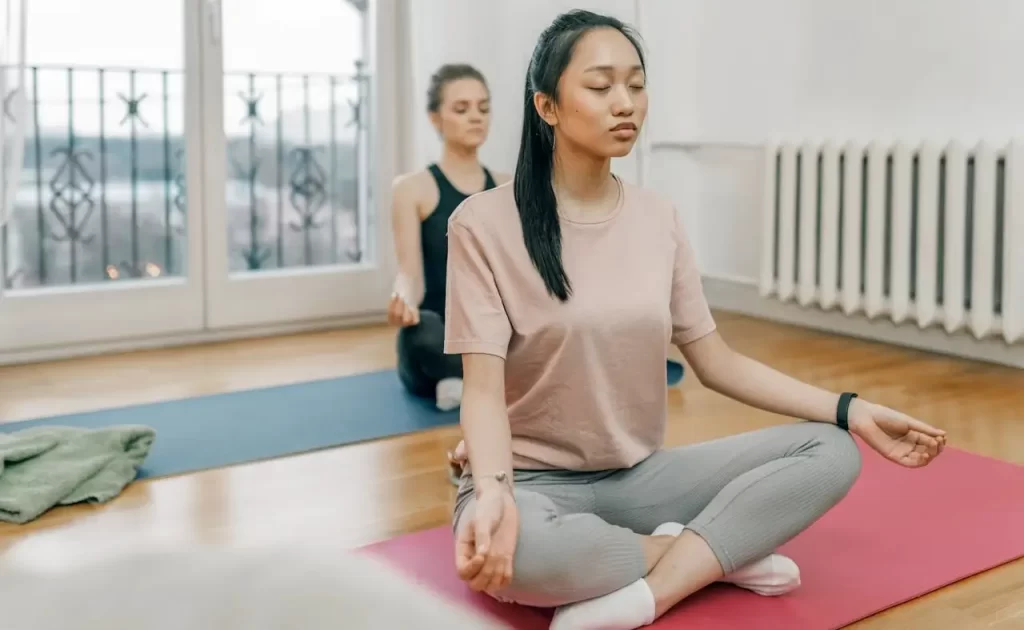
Sit cross-legged and focus on your breath. Sukhasana helps reduce stress and anxiety.
Sukhasana, or Easy Pose, is a simple yet powerful yoga posture designed for meditation and breathwork. Here’s an in-depth look:
- Posture and Alignment: Sit cross-legged on the floor, with each foot beneath the opposite knee. Keep your spine straight, shoulders relaxed, and hands resting on your knees or thighs.
- Breathing: Focus on deep, slow breaths to facilitate a calm and meditative state. This conscious breathing helps to reduce stress and anxiety.
- Benefits: Sukhasana strengthens the back, stretches the knees and ankles, and opens the hips. It also encourages proper body alignment and increases serenity.
- Practice Tips: Use a cushion or folded blanket under your sit bones for support. Ensure your weight is evenly distributed across your hips.
This pose is often used at the beginning or end of a yoga practice to center the mind and find balance. Engage in Sukhasana regularly to cultivate a sense of peace and relaxation.
Bridge Pose (Setu Bandhasana):
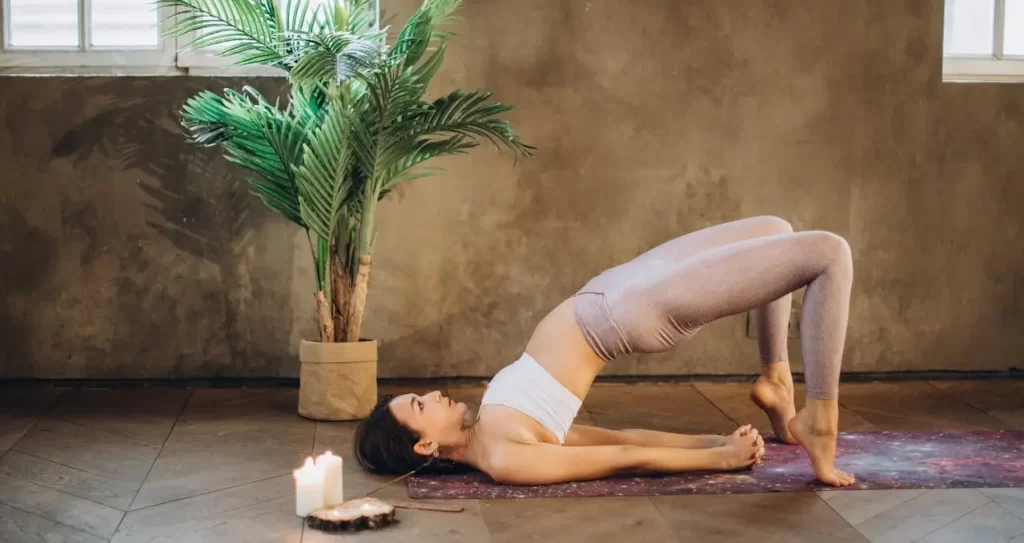
Lie on your back, bend your knees, and lift your hips. Bridge Pose relieves tension in the lower back and promotes relaxation.
🧘♀️ Bridge Pose (Setu Bandhasana) is a versatile yoga posture that offers both physical and mental benefits. Let’s dive into the details:
Physical Benefits:
- Stretches: Bridge Pose gently stretches your chest, shoulders, and abdomen.
- Strengthens: It targets your mid- to upper-back muscles, buttocks (glutes), thighs, and ankles.
- Posture Improvement: Regular practice can improve posture and counteract the effects of prolonged sitting and slouching.
- Back Pain Relief: Bridge Pose may help relieve low back pain and ease kyphosis (abnormal spine curvature).
- Inversion Benefits: Since your head is below your heart, it shares benefits with inversions like Headstand and Shoulderstand.
Mental and Emotional Benefits:
- Stress Reduction: Bridge Pose calms the mind, reducing anxiety and stress.
- Brain Calmness: It brings ease and encourages breathing over struggle.
- Variations: You can adapt the backbend to your comfort level.
How to Practice Setu Bandhasana:
- Lie on your back with knees bent and feet hip-distance apart.
- Press down through your feet, lift your hips, and roll your shoulders beneath you.
- Clasp hands behind your back or keep arms alongside your body.
- Broaden your collarbones and lengthen your spine.
- Exhale to release and lower back down.
Remember, Bridge Pose offers strength, flexibility, and relaxation. Enjoy its soothing effects! 🌟
Cat-Cow Stretch (Marjaryasana-Bitilasana):
Move between arching your back (cow) and rounding it (cat). This gentle flow eases spinal tension and calms the mind.
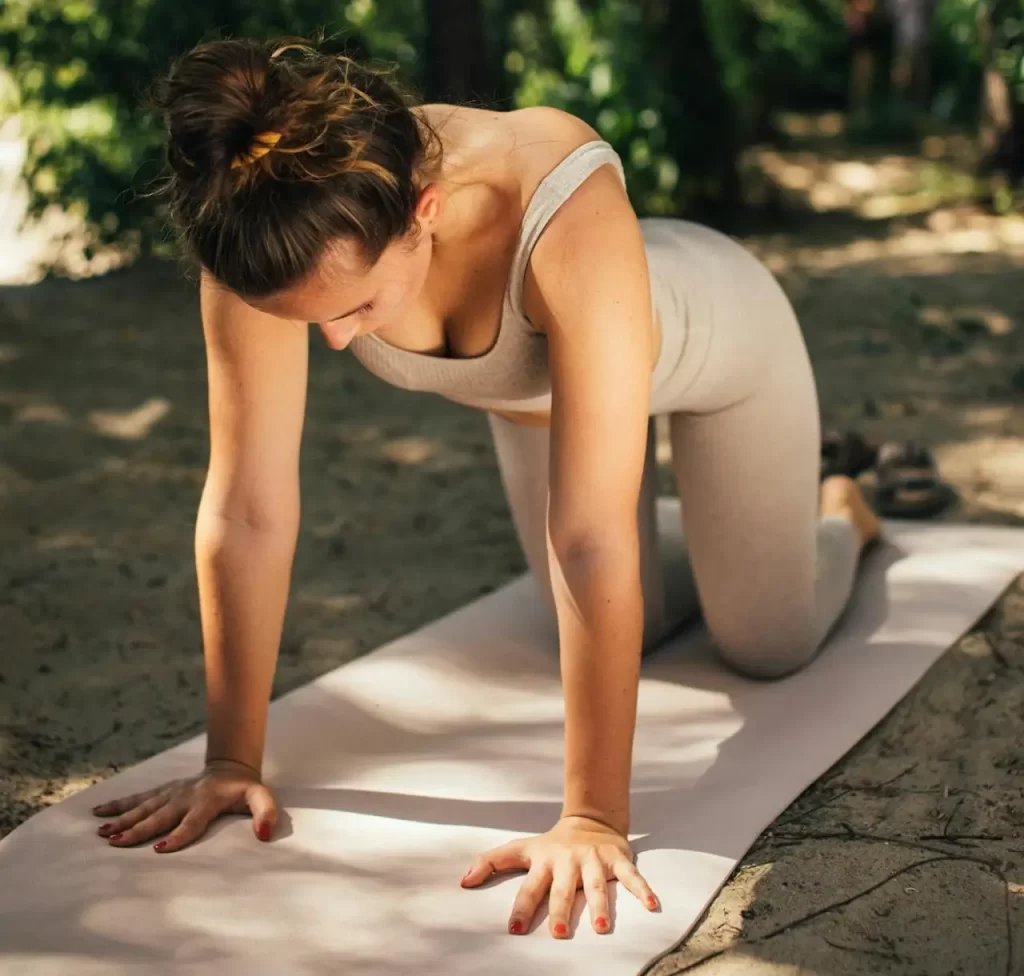
Certainly! 🐱🐄 Cat-Cow Stretch, also known as Marjaryasana-Bitilasana, is a dynamic yoga movement that combines two poses: the Cat Pose (Marjaryasana) and the Cow Pose (Bitilasana). Let’s explore its benefits in depth:
Physical Benefits:
- Spinal Flexibility: Moving between arching (cow) and rounding (cat) stretches the entire spine, promoting flexibility.
- Neck and Shoulder Relief: Cat-Cow releases tension in the neck, upper back, and shoulders.
- Abdominal Activation: The cat stretch engages the core muscles, supporting abdominal strength.
- Improved Blood Flow: The flow enhances blood circulation in the spine and pelvic region.
Mental and Emotional Benefits:
- Stress Reduction: The synchronized breath and movement calm the mind, reducing stress and anxiety.
- Mind-Body Connection: Cat-Cow fosters awareness of body sensations and breath.
- Balance and Focus: Practicing this flow cultivates balance and mental clarity.
How to Practice Cat-Cow Stretch:
- Start on your hands and knees (Tabletop position).
- Inhale, arch your back (cow), lift your head, and look up.
- Exhale, round your spine (cat), tuck your chin, and draw your belly in.
- Flow smoothly between these two positions, coordinating breath with movement.
- Repeat several rounds, allowing your spine to gently warm up.
Remember, Cat-Cow is a gentle, soothing flow that benefits both body and mind. Enjoy its calming effects! 🌟
Reclining Spinal Twist (Supta Matsyendrasana):
Lie on your back, bend your knees, and twist your legs to one side. This twist releases tension and aids digestion, promoting better sleep.
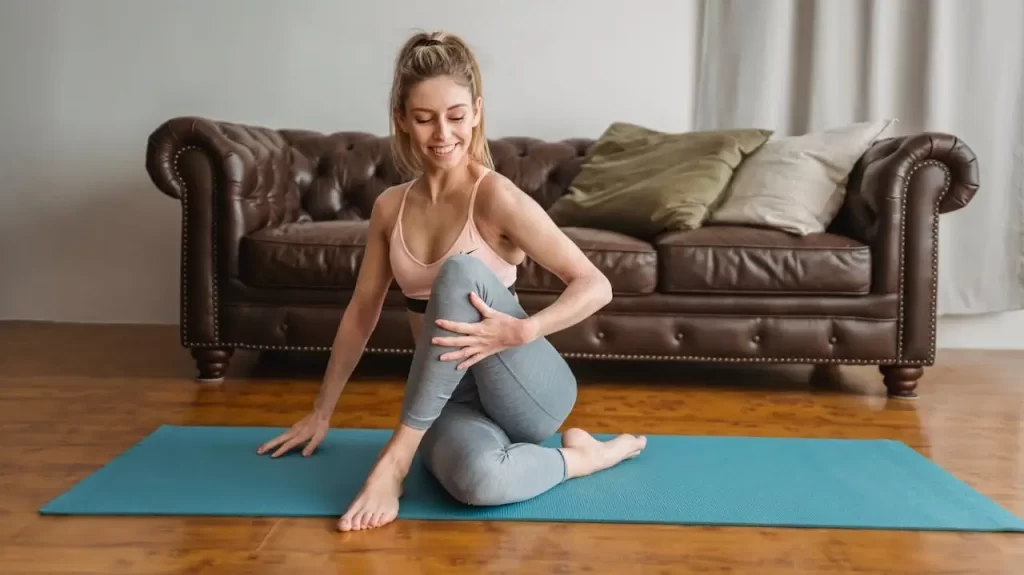
🧘♀️ Reclining Spinal Twist, also known as Supta Matsyendrasana, is a gentle and restorative yoga pose that offers several benefits for both the body and mind. Let’s explore it in detail:
Physical Benefits:
- Spinal Mobility: Supta Matsyendrasana lengthens, relaxes, and realigns the spine. It helps hydrate the spinal disks, promoting overall spinal health.
- Muscle Stretch: The pose stretches the psoas, glutes, and abdominal muscles, enhancing flexibility.
- Improved Posture: By strengthening and lengthening the muscles around your spine, this pose may gradually improve your posture.
- Abdominal Massage: It stimulates the abdominal organs, aiding digestion and promoting detoxification.
- Waist Toning: Regular practice can help tone the waistline.
Mental and Emotional Benefits:
- Relaxation: Supta Matsyendrasana is calming and soothing, making it an excellent choice for winding down after a yoga session.
- Better Sleep: The gentle twist encourages relaxation, which can contribute to improved sleep quality.
- Toxin Removal: By massaging the abdominal organs, the pose supports the body’s natural detoxification processes.
How to Practice Supta Matsyendrasana:
- Lie on your back with knees bent and feet flat on the floor.
- Extend your arms out to the sides at shoulder level.
- Exhale and drop both knees to one side (e.g., to the right).
- Keep your shoulders grounded and turn your head in the opposite direction (e.g., to the left).
- Breathe deeply and hold the twist for several breaths.
- Inhale to return to the center, and then repeat on the other side.
Remember, Supta Matsyendrasana is a gentle twist that promotes relaxation and overall well-being. Enjoy its calming effects! 🌟
Remember, consistency is key. Practice these poses regularly, especially before bedtime, to enjoy better sleep quality. Sweet dreams! 🌙
!Yoga for Sleep
What are some breathing techniques for better sleep?
Breathing Techniques for Better Sleep:
4-7-8 Breathing Technique:
- Inhale through your nose for 4 seconds.
- Hold your breath for 7 seconds.
- Exhale slowly for 8 seconds.
- Repeat this cycle 4 to 8 times.
Bhramari Pranayama (Humming Bee Breath):
- Close your eyes and cover your ears with your hands.
- Breathe out slowly through your nose, making the “Om” sound.
- Repeat 5 times.
Three-Part Breathing Exercise:
- Inhale deeply.
- Exhale slowly, focusing on how your body feels.
- Make your exhale twice as long as your inhale.
- Simple yet effective.
How long should you hold each pose?
Yoga Pose Durations:
- Initially, hold each yoga pose for roughly three minutes.
- Gradually build up to five minutes for each pose.
Recommend any specific yoga sequences for bedtime?
Bedtime Yoga Sequences:
Bedtime Yoga Routine:
- Calm and soothe your muscles with gentle stretches.
- Focus on deep, mindful breathing.
- Poses: Child’s Pose, Supine Tree, Supine Twist, Happy Baby, and more
Evening Yoga Stretch (10 Minutes):
- Neck rolls, Seated Cat-Cow, Reclined Twists, Half Happy Baby, Sphinx Pose, and more.
- End with Wide-Legged Child’s Pose and a closing breath.
Quick 5-Minute Yoga for Sleep:
- Poses: Child’s Pose, Supine Tree, Supine Twist, Happy Baby, and a closing meditation.
Remember, consistency is key! Practice these calming techniques and poses regularly to improve your sleep quality. Sweet dreams! 🌙
What are some other relaxation techniques for sleep?
Other Relaxation Techniques for Sleep:
Progressive Muscle Relaxation (PMR):
- Tense and then relax each muscle group in your body, starting from your toes and working your way up.
- This technique reduces physical tension and promotes relaxation.
Guided Imagery or Visualization:
- Imagine a peaceful scene, such as a beach or a forest.
- Focus on sensory details like sounds, smells, and textures.
- Visualization can calm the mind and prepare you for sleep.
Aromatherapy:
- Use calming scents like lavender, chamomile, or sandalwood.
- Diffuse essential oils or use them in a warm bath before bedtime.
Recommend a morning yoga routine too?
Morning Yoga Routine:
Sun Salutation (Surya Namaskar):
- A dynamic sequence that warms up your body and energizes you for the day.
- Includes forward bends, lunges, and gentle backbends.
Cat-Cow Stretch (Marjaryasana-Bitilasana):
- Move between arching your back (cow) and rounding it (cat).
- This gentle flow awakens your spine and improves flexibility.
Downward-Facing Dog (Adho Mukha Svanasana):
- Lengthen your spine, stretch your hamstrings, and engage your core.
- Great for overall body awakening.
How to create your own personalized bedtime sequence?
Creating Your Personalized Bedtime Sequence:
Set an Intention:
- Decide what you want from your practice (relaxation, stress relief, etc.).
Choose Poses:
- Select calming poses like Child’s Pose, Legs Up the Wall, or Corpse Pose.
- Include gentle stretches and twists.
Mindful Breathing:
- Incorporate deep, slow breaths during each pose.
- Focus on relaxation and letting go.
Duration:
- Start with 3-5 minutes per pose.
- Adjust based on your comfort level and time available.
Remember, consistency matters! Customize your routine to suit your needs, and enjoy the benefits of a well-rounded yoga practice. Sweet dreams and energizing mornings! 🌞🌙
Here’s a quick midday stretch routine to refresh your body and mind, followed by tips on maintaining motivation for regular practice:
Recommend a quick midday stretch routine?
Midday Stretch Routine (5-10 minutes):
Neck Rolls:
- Sit or stand comfortably.
- Gently roll your neck in both directions to release tension.
Forward Fold:
- Stand with feet hip-width apart.
- Bend forward at the hips, reaching toward your toes.
- Let gravity stretch your hamstrings and lower back.
Seated Back Twist:
- Sit cross-legged.
- Twist your upper body to one side, holding the opposite knee.
- Repeat on the other side to improve mobility.
Bound Angle (Baddha Konasana):
- Sit with soles of feet touching.
- Gently press knees toward the floor to stretch inner thighs.
Chest Stretch (Doorway Stretch):
- Stand near a doorway.
- Place hands on the door frame at shoulder height.
- Step forward to stretch your chest and shoulders.
How to maintain motivation to practice regularly?
Maintaining Motivation for Regular Practice:
Set Realistic Goals:
- Be specific and measurable.
- Keep goals attainable and relevant to your needs.
Create a Comfortable Space:
- Designate a dedicated area for yoga.
- Ritualize your practice to make it enjoyable.
Diversify Your Routine:
- Explore different yoga styles and wellness practices.
- Variety keeps it dynamic and engaging.
Remember, even a few minutes of mindful movement can make a difference! 🙌 Keep it simple, and enjoy your practice! 🧘♀️🌟
How to incorporate mindfulness into your practice?
Incorporating Mindfulness into Your Practice:
- Mindful Yoga: Combine mindfulness with yoga by paying attention and being fully present during your movements. Listen to your body, discern its signals, and know when to stop or challenge yourself.
- Focus on the Present: Leave judgment behind, focus on yourself, and practice in a way that works for you. Be aware of sensations, breath, and movement.
What are some yoga apps for guided routines?
Yoga Apps for Guided Routines:
- Yoga Studio by Gaiam: Offers themed classes, customizable flows, guided meditations, and relaxation practices.
- Down Dog: Suitable for all fitness levels, with personalized classes and dynamic sequences.
- Daily Yoga: Provides community support and a variety of classes.
- Glo: Great for busy schedules, offering diverse content.
- Simply Yoga: Kid-friendly app for all ages.
- Yoga Workout: Budget-friendly option.
- Pocket Yoga: Ideal for beginners.
- 5 Minute Yoga: Perfect for quick office breaks.
Recommend a post-workout stretch routine too?
Post-Workout Stretch Routine:
Stretching after exercise is crucial for flexibility, injury prevention, and relaxation.
Here’s a simple routine:
- Hamstring Stretch: Extend one leg forward, flex your foot, and reach toward your toes.
- Child’s Pose: Kneel down, sit back on your heels, and stretch your arms forward.
- Seated Spinal Twist: Twist your upper body to each side, holding the opposite knee.
- Lunges: Step forward into a lunge position, stretching hip flexors.
- Arm and Wrist Stretch: Extend your arms, rotate wrists, and stretch fingers.
Breathe deeply, hold each stretch for about 30 seconds, and repeat 2-4 times.
Remember, consistency matters! Whether it’s mindfulness, yoga apps, or post-workout stretches, find what works best for you and enjoy the journey. 🧘♀️🌟🙏


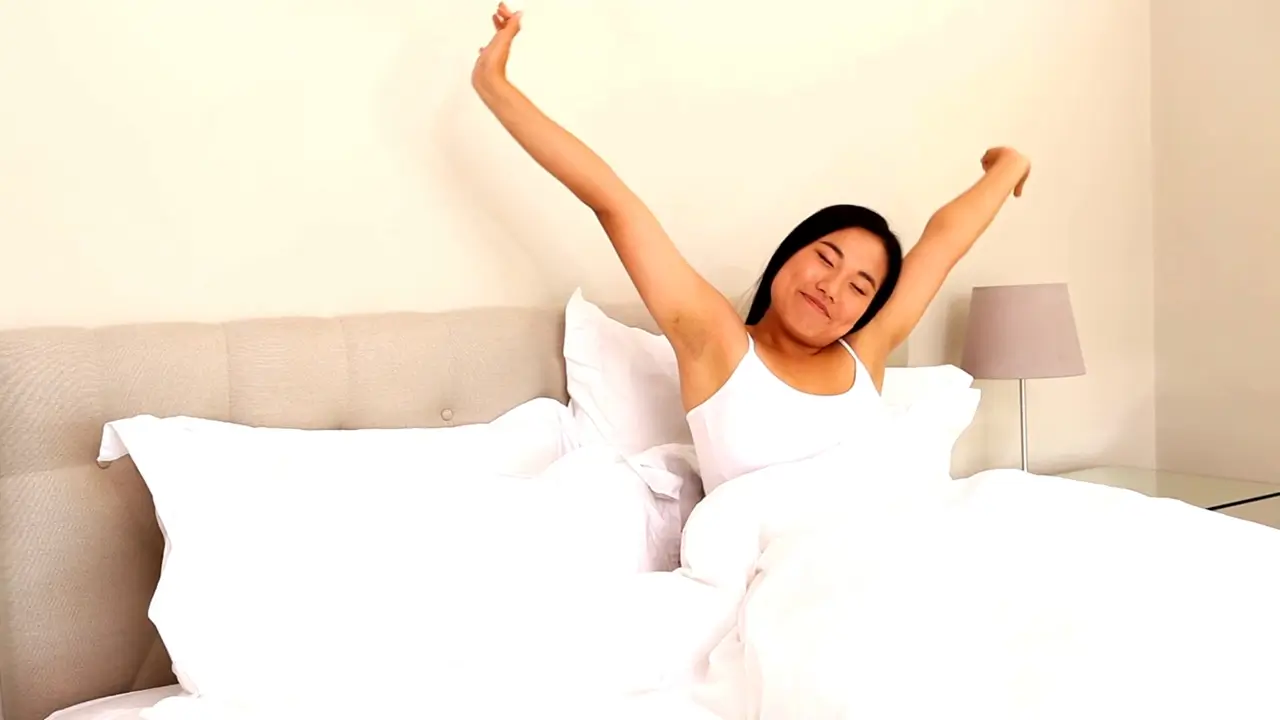
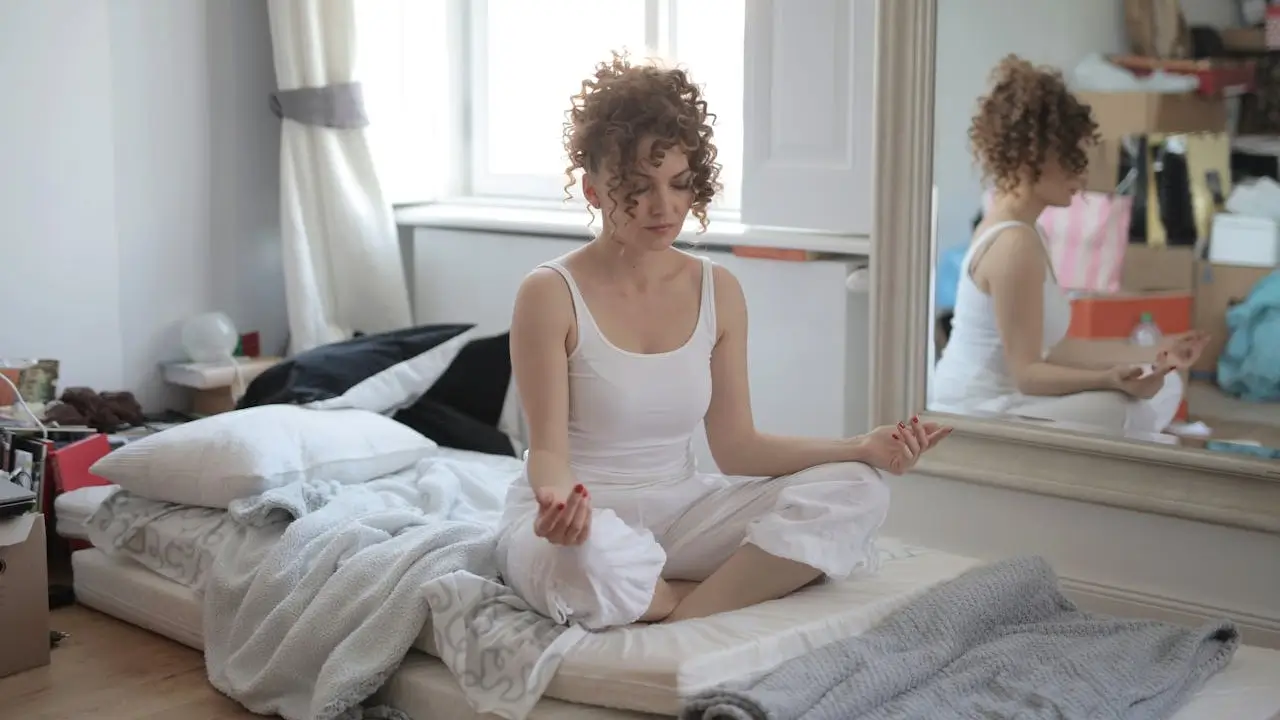
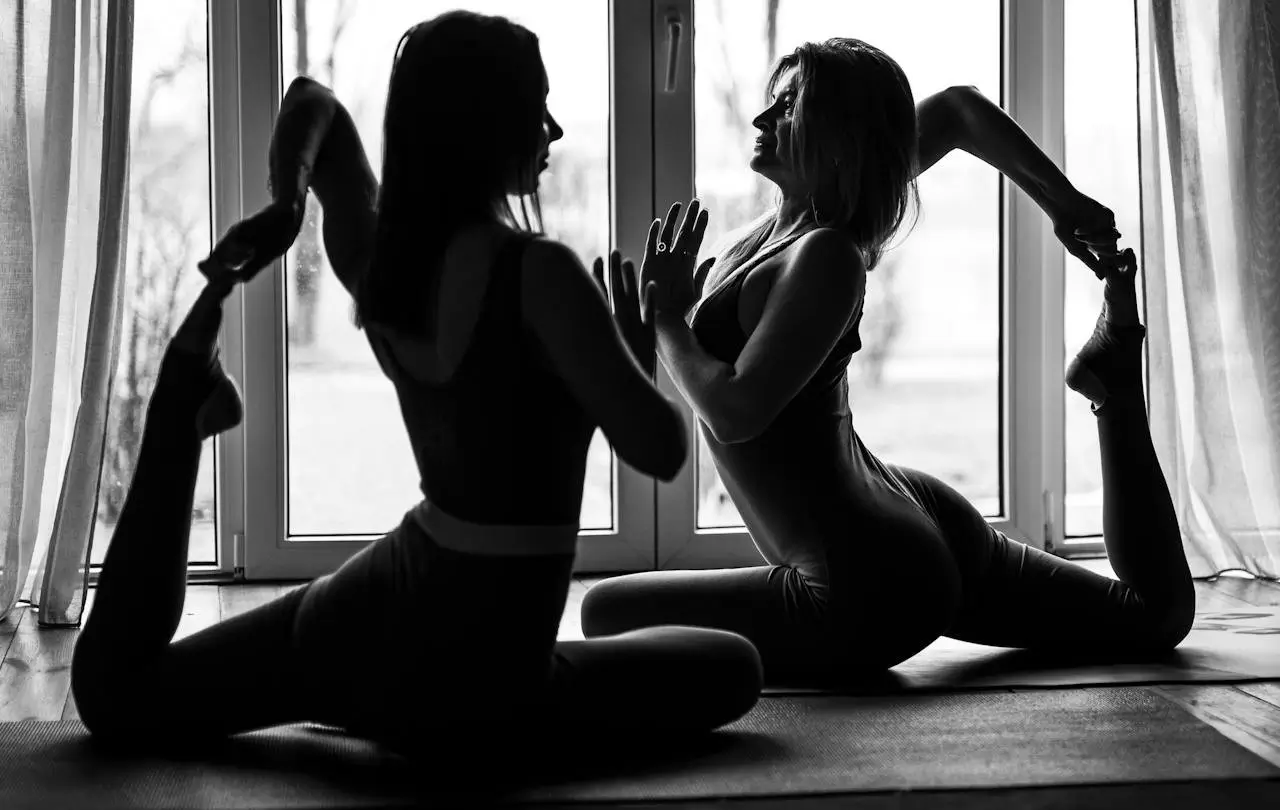
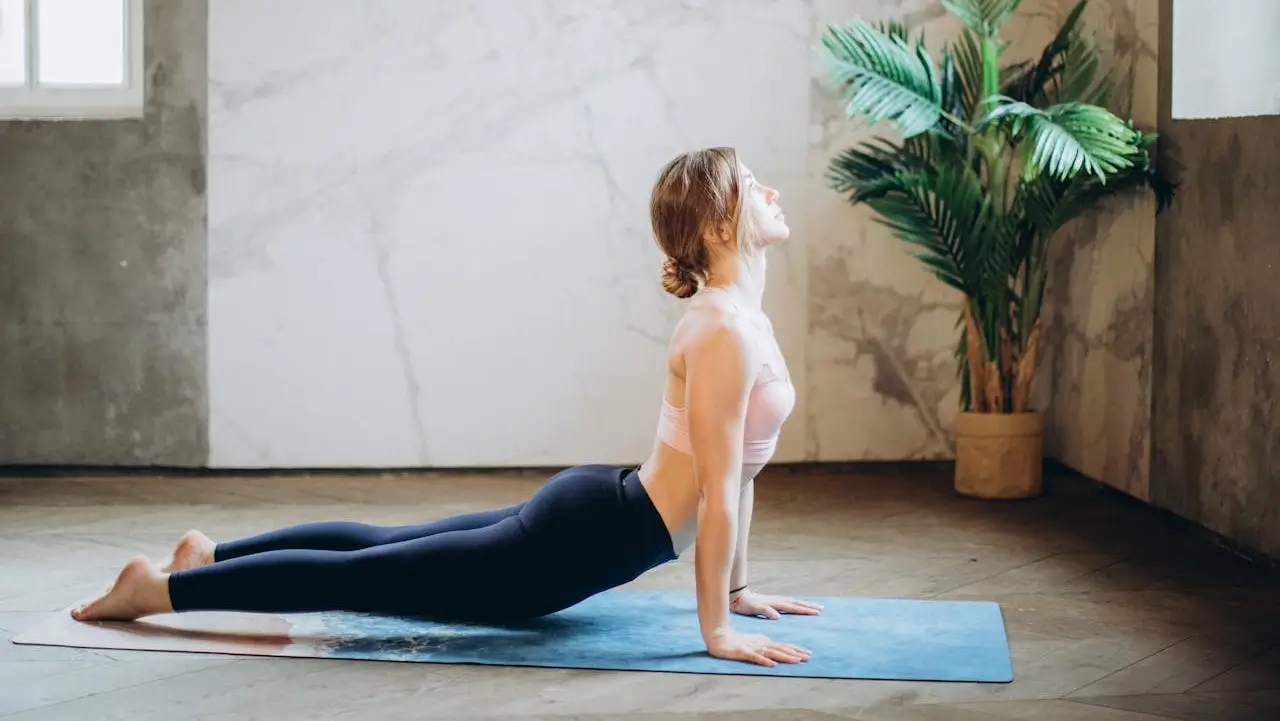
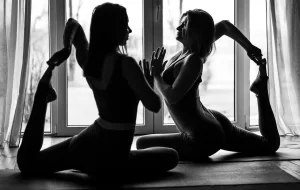
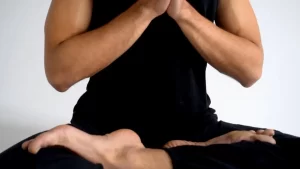
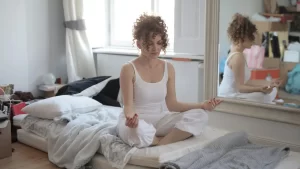
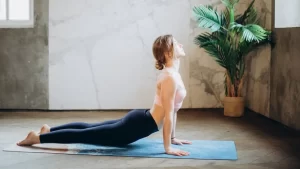







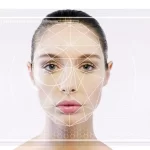
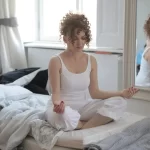

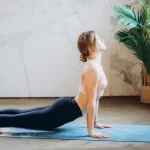
I went over this web site and I think you have a lot of superb info, saved to favorites (:.
I cling on to listening to the reports lecture about receiving boundless online grant applications so I have been looking around for the best site to get one. Could you advise me please, where could i acquire some?
I truly enjoy reading through on this web site, it holds excellent articles.
This is very interesting, You are a very skilled blogger. I have joined your feed and look forward to seeking more of your wonderful post. Also, I’ve shared your website in my social networks!
I think you have remarked some very interesting points, thankyou for the post.
Hello.This article was extremely remarkable, especially because I was browsing for thoughts on this subject last Sunday.
I’d have to verify with you here. Which isn’t one thing I often do! I get pleasure from studying a put up that can make folks think. Also, thanks for allowing me to remark!
F*ckin’ tremendous things here. I am very glad to see your post. Thanks a lot and i am looking forward to contact you. Will you please drop me a e-mail?
I genuinely enjoy looking through on this website , it has got good articles. “Words are, of course, the most powerful drug used by mankind.” by Rudyard Kipling.
You have brought up a very fantastic points, appreciate it for the post.